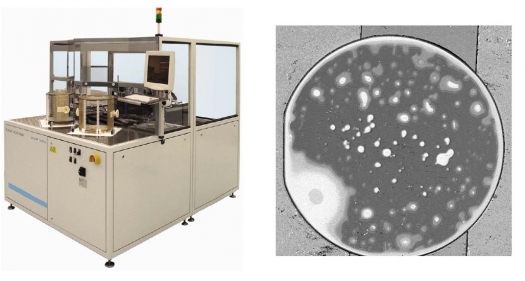PVA Tepla & imec develop 3D TSV void detection

Scanning acoustic microscopy for non-destructive void inspection after wafer bonding improves wafer thinning performance and tool stability and can also be applied to detect voids in TSVs during processing
Imec and PVA Tepla believe they have made breakthrough results in the detection of TSV voids in 3D stacked IC technology.
After having applied Scanning Acoustic Microscopy to temporary wafer (de)bonding inspection, they successfully used new advanced GHz SAM technology to detect TSV voids at wafer-level after TSV copper plating.
Together, they will continue to investigate the applicability of high-frequency Scanning Acoustic Microscopy (SAM) for non-destructive submicron void detection.
The initial focus of the collaboration was on developing metrology aimed at detecting voids after temporary wafer bonding, allowing for proper rework of 3D wafers.
Temporary wafer (de)bonding and thin wafer handling remains challenging for 3D stacked IC technology. The development of interface particles and voids during the temporary bonding process has a detrimental impact on the subsequent wafer thinning process steps, affecting the wafer thinning performance as well as long-term tool stability and performance.
PVA Tepla and imec have developed an automated foup-to-foup, wafer-level process based on 200MHz SAM using Tepla's AutoWafer 300 tool.
Foup is an acronym for Front Opening Unified Pod or Front Opening Universal Pod. It is a specialised plastic enclosure designed to hold silicon wafers securely and safely in a controlled environment, and to allow the wafers to be removed for processing or measurement by tools equipped with appropriate load ports and robotic handling systems.
After demonstrating non-destructive detection of interface particles and voids, imec used PVA Tepla's high-resolution capability GHz frequency SAM tool to successfully detect voids in TSVs of 5µm diameter and 50µm depth, immediately after plating.
Future work will concentrate on further refining the process and implementing GHz SAM capability to increase the spatial detection resolution.
PVA Tepla and imec will also investigate the applicability of GHz SAM to detect submicron voids in TSV and to investigate other aspects related to 3D-technology such as bump connection quality.
































